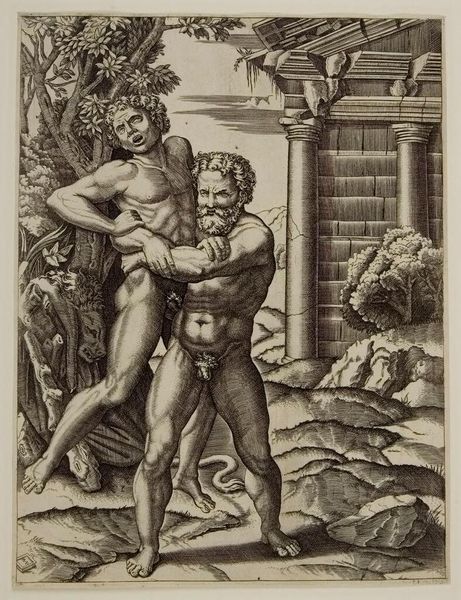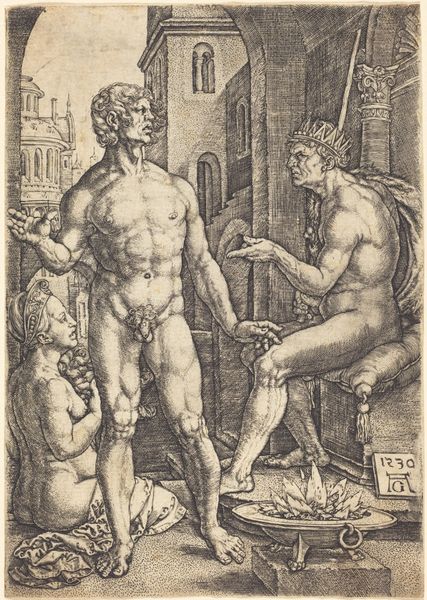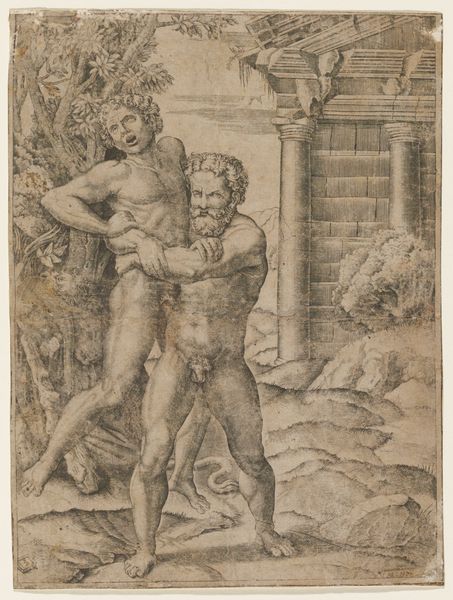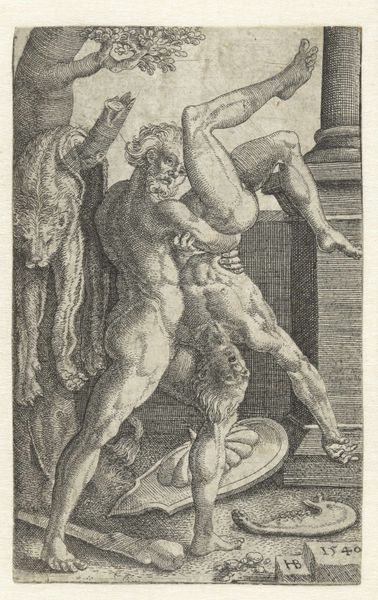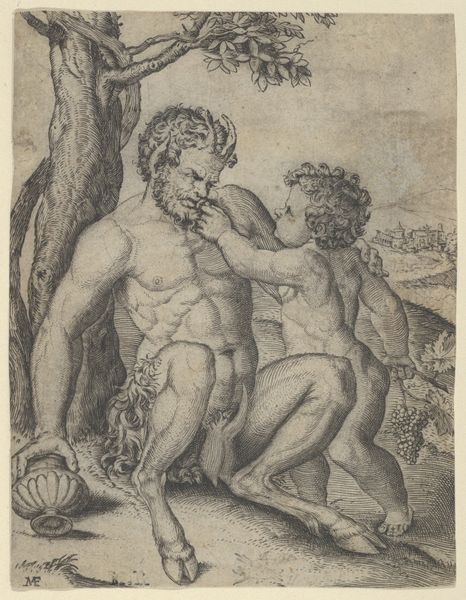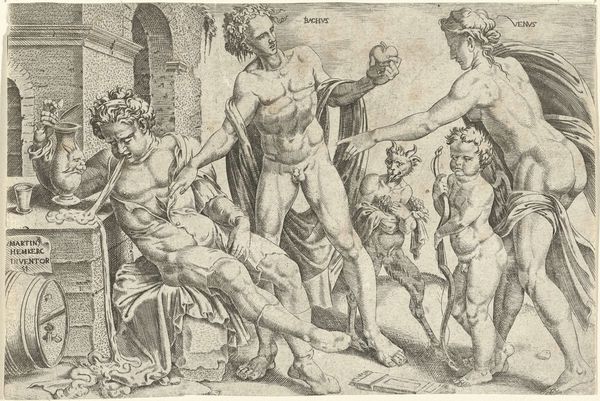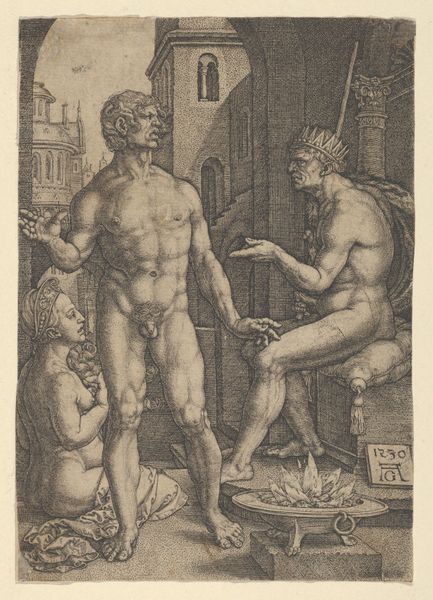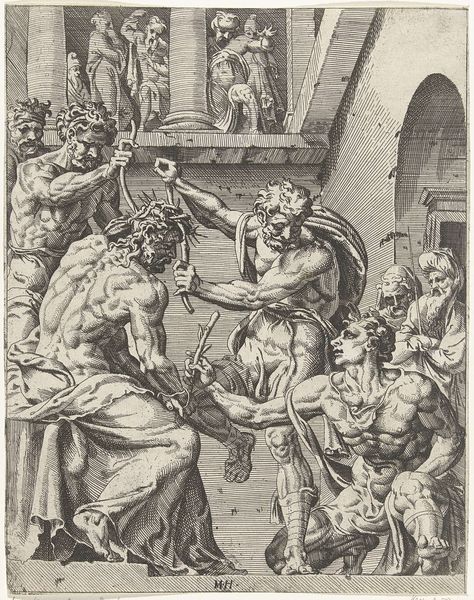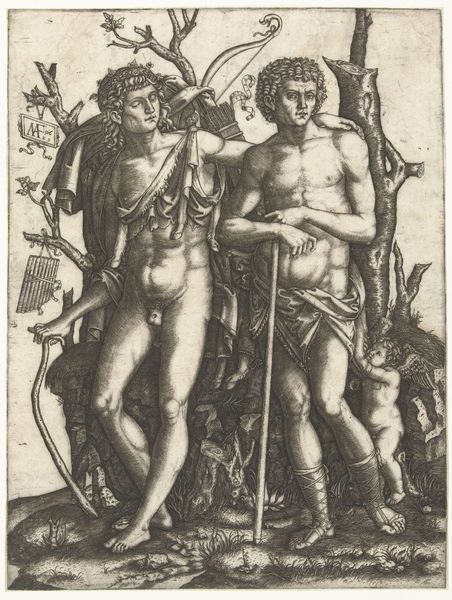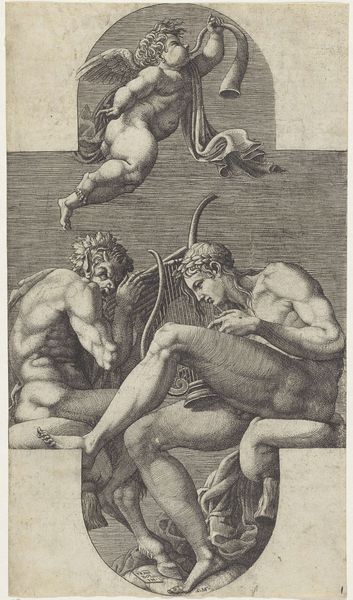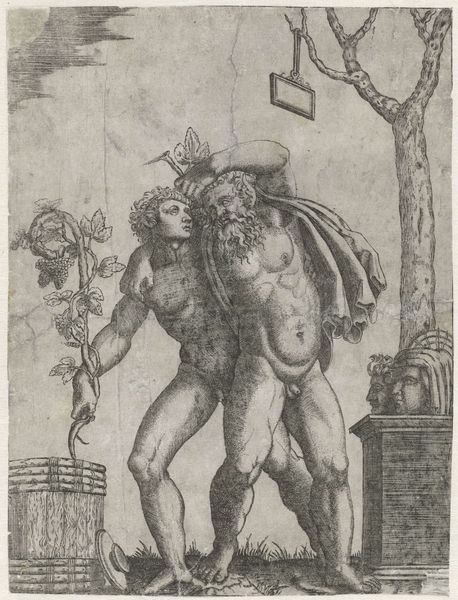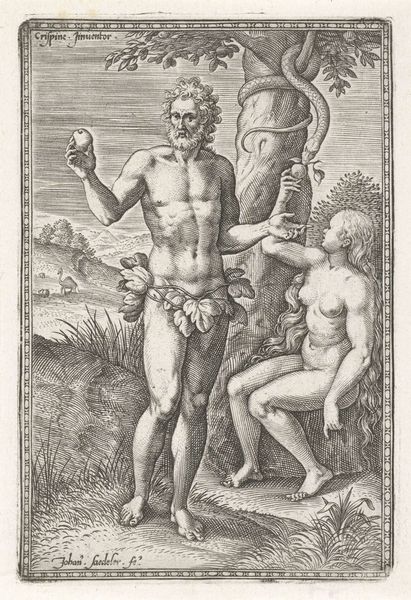
print, engraving
# print
#
old engraving style
#
figuration
#
form
#
11_renaissance
#
line
#
history-painting
#
italian-renaissance
#
nude
#
engraving
Dimensions: height 312 mm, width 217 mm
Copyright: Rijks Museum: Open Domain
Editor: So, this engraving, Hercules worstelt met Antaeus, made by Marcantonio Raimondi between 1520 and 1522, it’s intense. I mean, the wrestling scene is really dynamic, and I can feel the tension just looking at it. How would you interpret this work within its historical context? Curator: Considering the period, the Italian Renaissance, we're witnessing a revived interest in classical antiquity. Hercules, of course, is a major figure in classical mythology, embodying strength and virtue. Raimondi, and other artists of his time, would've been consciously placing themselves in a dialogue with ancient art. How do you think the *choice* of representing this particular myth affects its reception? Editor: Well, everyone knew the story of Hercules. So, showing this specific struggle, where Hercules lifts Antaeus away from the earth to rob him of his power, it's kind of about brains over brawn. I mean, everyone *thought* of Hercules as strong. Curator: Precisely! And what does that say about the cultural values of the time, the patronage networks of artists such as Raimondi and, maybe more importantly, what the elites commissioning artwork wanted to express through it? Hercules's victory can be read as the triumph of civilized society over the primitive or the barbarous. And given that prints circulated widely, far more so than paintings, consider who would’ve consumed such imagery. Editor: Ah, I get it! The rising merchant class wanted to align itself with heroic and cultured ideals and promote those ideals to others through images like these. I guess that means it says as much about who was looking at the work as who made it! Curator: Exactly. So, seeing art this way, we’re not just focusing on the individual genius of Raimondi, but also acknowledging the role of imagery in shaping social values. Editor: I'm going to have to rethink my Renaissance art history reading list. Thanks for pointing this out.
Comments
No comments
Be the first to comment and join the conversation on the ultimate creative platform.
